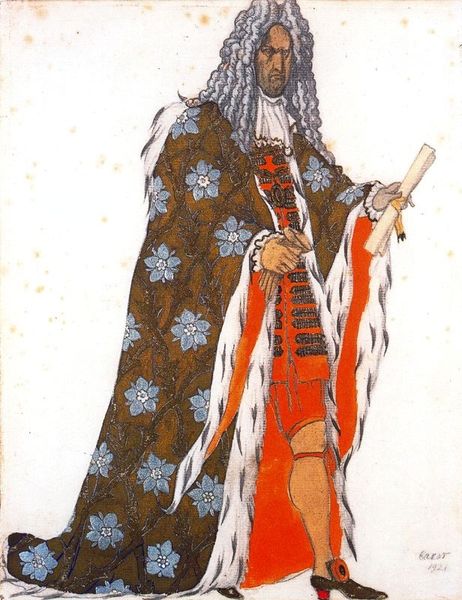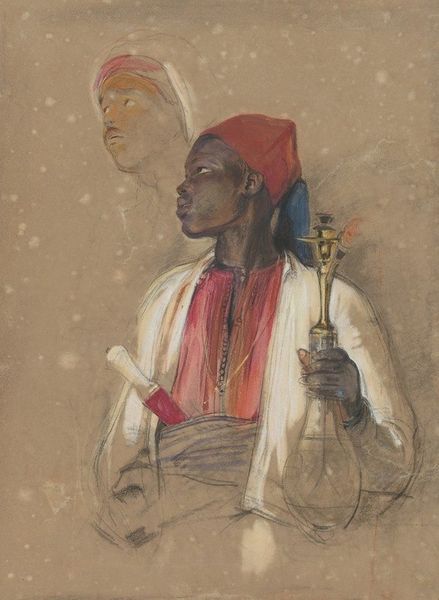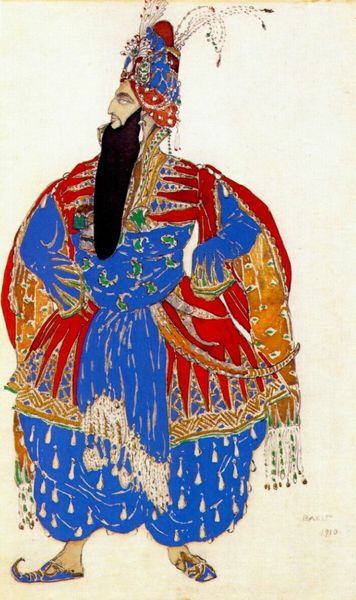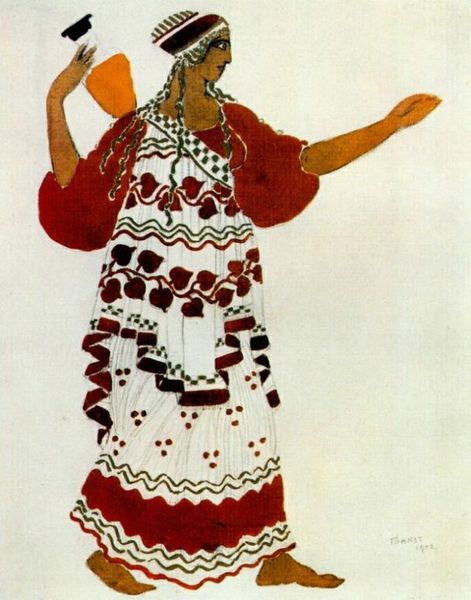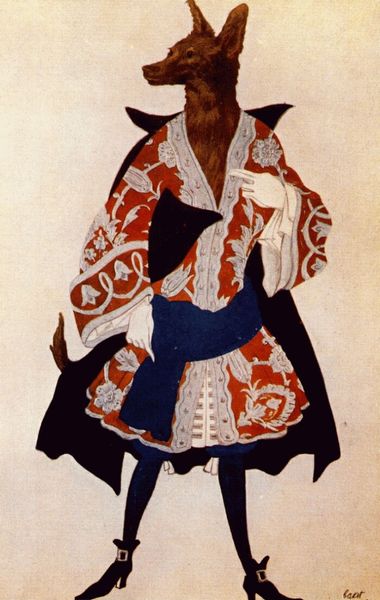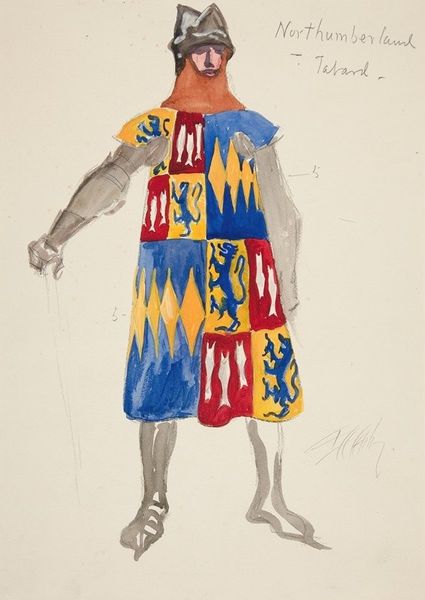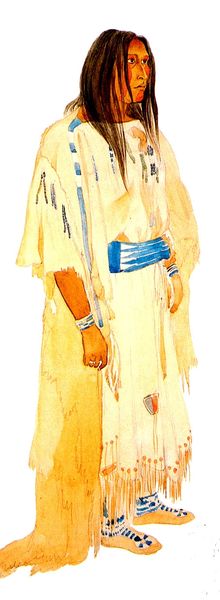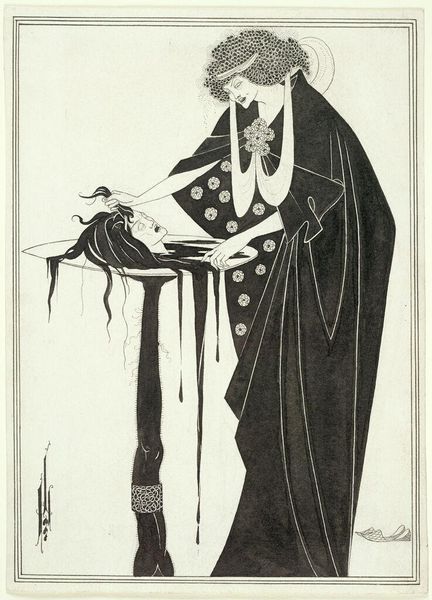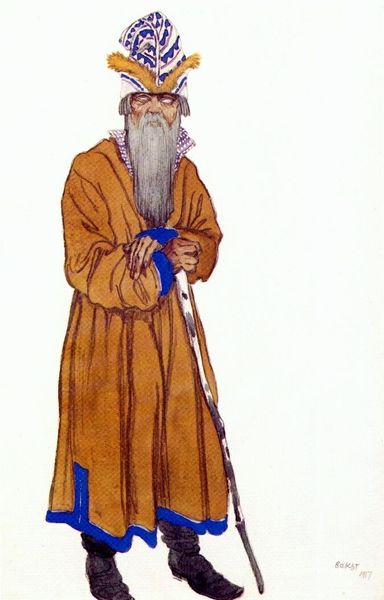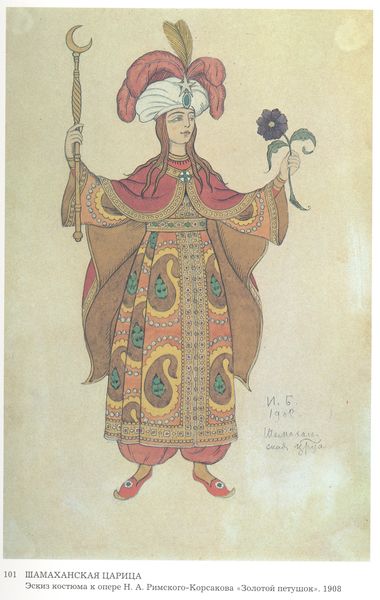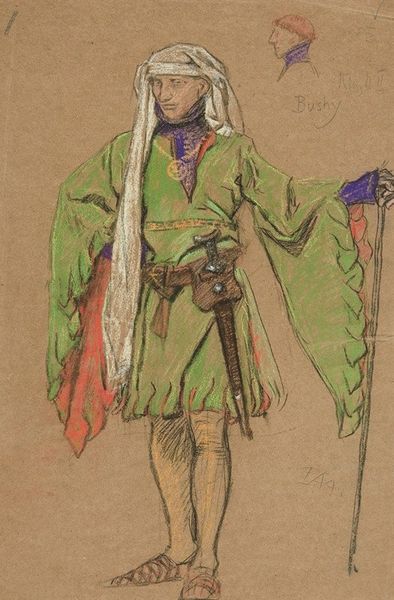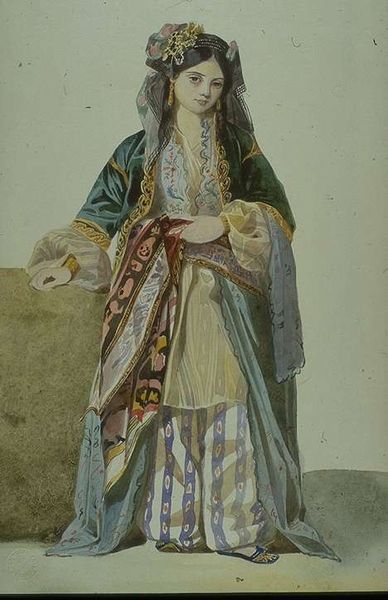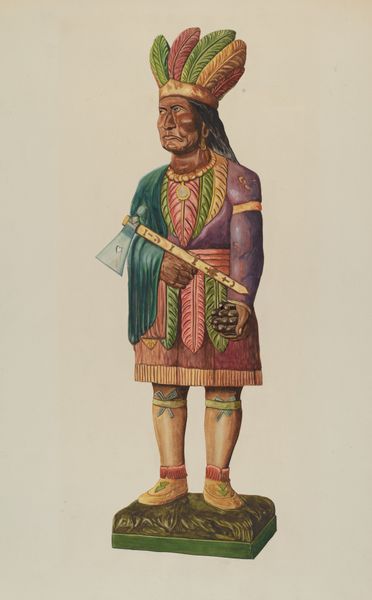
Copyright: Public domain
Curator: Oh, hello there! Let’s dive into this arresting image – “Samarkand Sultan,” created by Léon Bakst in 1922, rendered delicately in watercolor. It just vibrates, doesn’t it? Editor: Vibrate is certainly a word for it. My first impression is overwhelming – a clash of vibrant colours and textures demanding attention. Almost aggressively ornamental. Curator: Precisely! Bakst, with his history in set and costume design, had such a knack for capturing theatricality. What strikes me is the way he uses costume to hint at power and persona. Think about all those hands, across many artisan families, involved in crafting the textiles he’s illustrating here! Editor: I’m thinking about that too! That patterned robe screams luxury, hand-stitched likely from the finest silks, embellished to communicate wealth and authority, and clearly geared towards an elite consumer! The very creation of the robe reflects a network of social relations. But beyond craft, the figure remains somewhat enigmatic to me. Is Bakst glorifying power or perhaps critiquing it through excessive display? Curator: Ooh, I love that reading! It's that very tension that draws me in. There's something melancholic in the Sultan’s gaze. And consider the whiteness of the page. All that open space gives him a lonely, almost isolated presence despite all that rich detailing in the costume. Editor: Yes, there's something definitely stagey, a calculated sense of spectacle. I wonder who he truly was. An exoticised stereotype? Or was there agency there within the depicted materiality of clothing? It does not seem to portray individuality beyond performance and costume. Curator: A costume piece frozen in time and watercolour—that’s rather evocative. What remains for me is Bakst's rendering of someone seemingly poised between grandeur and vulnerability. That's a tightrope walk I appreciate. Editor: I appreciate thinking through it this way. Thank you for highlighting Bakst's careful placement of colours to convey, and perhaps simultaneously conceal the sultan's emotions. The politics and context behind this are rather intriguing indeed.
Comments
No comments
Be the first to comment and join the conversation on the ultimate creative platform.
